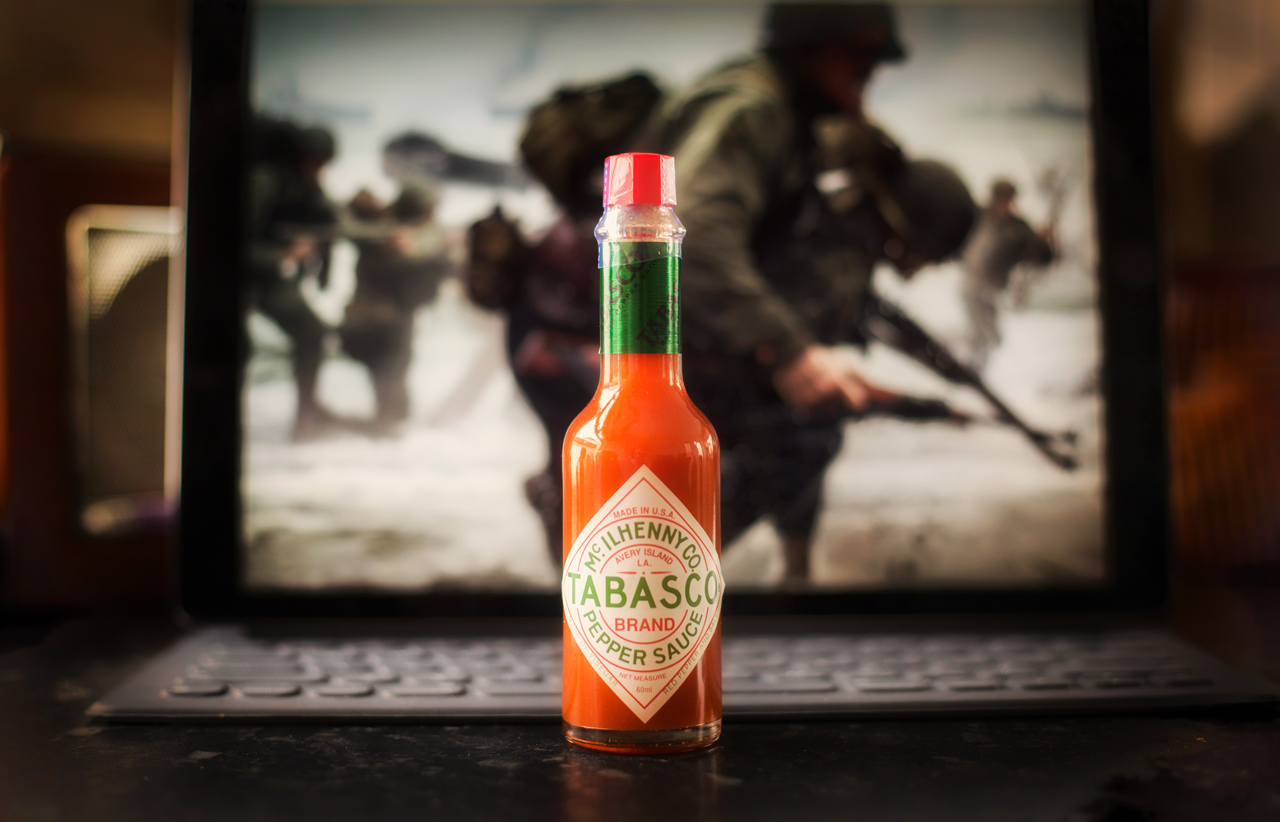The hot sauce linking violence to video games
It's literally hot sauce—sometimes loudness—and that's why the evidence linking violent video games to real world violence is problematic.

“Mario Party 9 is considered violent, because the characters purposely hop on other characters’ heads to lay them flat.”
In 2017, I gave a talk at the National Math Festival on the research and evidence of a possible link between violent video games and violence. A number of psychologists have considered this question seriously, resulting in scores of papers on the topic. These studies include examining whether, among other questions, children or young adults exhibit aggressive behaviors after playing a violent video game, or whether children who play a lot of video games are also more inclined to get into fights at school.
Yet for all this research, there is no real consensus on the answer. While some professional organizations such as the American Psychological Association (APA) and the American Academy of Pediatrics (AAP) have made it clear they believe the evidence overwhelmingly points to an association between violent video games and aggressive behaviors, many dissenting scholars have publicly noted severe limitations to the research. Among the strongest claims are that violent media are associated with (not “cause”) aggression (not “violence”). Here is the APA weighing in on the matter in 2015:
“…all existing quantitative reviews of the violent video game literature have found a direct association between violent video game use and aggressive outcomes.”
“…there is convergence of research findings across multiple methods and multiple samples with multiple types of measurements demonstrating the association between violent video game use and both increases in aggressive behavior, aggressive affect, aggressive cognitions and decreases in prosocial behavior, empathy, and moral engagement;”
The APA’s tone certainly reads like there’s no academic dispute, and that violence begets violence. Yet a careful parsing of the words reveals a reluctance to attribute aggression causally to violent video games, and a reluctance to suggest that violence is an outcome. The APA statement was similar to one in 2010, which resulted in 230 academics signing a letter of objection, arguing that the APA statement is an alarmist overreach. More recently, a committee within the APA evaluated the most recent evidence, and concluded that the research was too full of methodological problems to convincingly link violent video games to violence.
The problem with the research is that we can’t incubate disturbed teen gun-owners and have some of them play violent video games while the others don’t, and then wait and see which one will commit an act of serious violence.
Violent behavior doesn’t generally occur in an experimental setting, and purposefully evoking truly violent behavior would raise serious ethical issues about the study. For this reason, psychologists are more like to study an outcome like “aggressive behaviors,” which, in extreme form, may constitute violence.

Screen shot from Wolfenstein 2
A typical experiment may compare the behavior of two groups of college students, one group that plays violent video games and one group that plays only nonviolent video games. After a period of game-playing, the students are told that someone who does not like hot sauce has agreed to eat it. Each participant gets to choose the quantity of hot sauce. In a 2014 study at the University of Sussex, those who played violent video games doled out more hot sauce than those who did not. Are they more aggressive? Are they more violent? Would an extreme version of this behavior consist of buying a rifle and shooting up their high school?
The link between aggression and violence—especially the kind recently on display in Florida’s Parkland shooting—is tenuous at best. While aggression is widespread, and often admired (football anyone?), violence is much less ubiquitous, especially the kind of violence that goes beyond a fist fight, and into the realm of mass shootings.
But even if we agree that voluntarily subjecting someone to spicier hot sauce indicates increased aggression, there is plenty of confusion about what constitutes a violent video game. According to Craig Anderson, a professor at Iowa State University, who champions a link between violence and violent gaming,
“Violent media are those that depict intentional attempts by individuals to inflict harm on others. An ‘individual’ can be a nonhuman cartoon character, a real person, or anything in between.”
As a result, most video games are violent—from the obvious, such as Call of Duty: WWII or Destiny 2, to the less obvious. Mario Party 9 is considered violent, because the characters purposely hop on other characters’ heads to lay them flat. Games used in research on the violent-game-aggressive-behavior link include Ty2, featuring a cartoon Tasmanian tiger in a customizable world (who nonetheless throws boomerangs against his enemies).
And therein lies a big problem. The research is plagued by explanations that don’t isolate “violence” as a factor by itself. I may respond more aggressively after playing Mario Party 9 than after playing a cooperative game, but the response might be about excitement, adrenalin, or competition, rather than violence. In a small study out of Brock University in Ontario, students who played more competitive games doled out more and hotter sauce, but equally competitive games with different levels of violence did not result in aggression measured in terms of hot sauce.
When it comes to controlled environments, “violent video games” and “nonviolent video games” have more than just “violence” as differences. Mismatched games make for poor comparisons; even if people exposed to the violent games exhibit more aggression, the result is up for interpretation.
The outcomes also have questionable clinical significance. We don’t even know how meaningful the differences in the heat of hot sauces are. Does a difference of 100 Scoville Heat Units (SHU) matter? What about 1000? How would we compare those different “aggression levels” across different studies, some of which use hot sauce (perhaps without recording the heat) as a surrogate for aggression, and some of which use loudness of a noise participants choose to subject someone to after playing video games?
Most studies aiming to assess video game impact are small, so researchers have turned to meta-analyses to combine studies with hopes of more conclusive results. But a meta-analysis relies on studies being comparable; how does one match up an aggression surrogate like the quantity of hot sauce a participant puts in a cup, and another metric of aggression like how loud a participant makes a punishing sound? Incomparable results and disagreement about the interpretation of these results plague contrasting meta-analyses from giants in the field of video game violence and its impact (such as two meta-analyses on violent video games and linked aggression, one by CJ Ferguson at Stetson University, and one by Anderson).
Observational studies have the advantage that they can find people who have exhibited actual violent behaviors. In one study, kids ages 9-18 who played violent video games in the last year were more likely to report bringing a weapon to school in the last month than kids who had no exposure; yet, these same kids were more likely to be bullied and feel threatened, possibly bringing in weapons for protection rather than from an intent to harm. A study looking at student mass-killer assailants found only one in eight students had an interest in violent video games, which is less than the interest exhibited by people who have not committed the same acts.
Different problems plague observational studies: kids who are attracted to violent video games may already be inclined toward violence. Which came first?
The question of violence in media is not new, even if the medium of video games is comparatively new. We used to worry about violence on television and in movies. Consider the massive scale with which we consume these media, and it’s hard to justify the conclusion that the game industry is to blame for mass shootings. If violent video games led directly to such violent actions—and more directly than, say, access to guns—we would see even more such shootings. While video game consumption has gone up, mass shootings (as a proportion of the population) has stayed constant. Unfortunately, the number of deaths for each mass shooting has gone up.
Updated, March 12, 2018

Trackbacks/Pingbacks